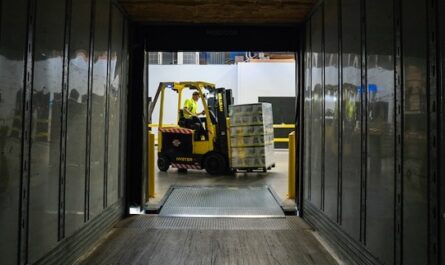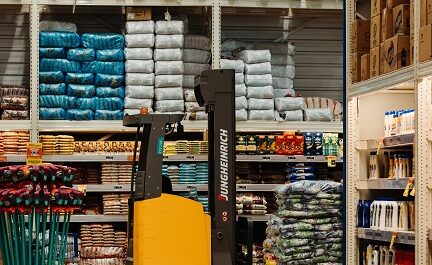Your Sales Team informs that the sales volume in the next 5 years will increase significantly. They asked the manufacturing team to be able to support their sales figures needs by providing sufficient products from the manufacturing side.
Getting such information, what should you do?
What is clear, you have to double-check whether your current production capacity can meet sales needs or not.
You may have to plan to increase your production capacity to meet these sales figures.
And this is our discussion this time. We will discuss capacity planning.
But before going deeper, make sure you have also joined the scmguide telegram channel so you don’t miss the latest updates from this blog and at the same time get deeper insights about other supply chain management topics.
Table of Contents
What capacity planning should be done?
Once you know how much capacity you need, it’s time to prepare it.
The question is, what capacity do you have to prepare in this capacity planning?
There are several capacities that you must ensure as follows.
Production capacity
The most important thing, of course, is that you have to make sure your production facility has enough capacity to make the products your sales team needs.
This includes the capacity of your workforce, both in terms of skills and numbers. Also various production equipment or machines that you need.
You have to make sure that you have enough manpower and production machines to produce the required amount of product.

If you have to add machines, do you still have enough space to accommodate the new machines?
What will the layout of your production facility be like? How do you route materials from your warehouse to your production line?
You should ask such questions when planning capacity for your production facility.
Warehouse capacity
Just like production facilities, you also have to plan for warehouse capacity.
With increased sales volume, with predetermined inventory levels, is your warehouse area sufficient or not?
What about your material handling equipment, such as forklifts, reach trucks or hand pallets? Do you need to buy a new one or is it enough with the existing equipment?
How about your warehouse manpower? Do they have enough skills to handle more inventory?
Are they able to handle faster inventory turnover?
With an increase in sales volume, of course, your raw material needs will also increase. Even so with finished goods that you have to keep. So, you have to ensure that the capacity of the two types of warehouses (raw materials and finished goods) is sufficient.
You might also like:
- How to Treat KPIs the Right Way to Improve Your Supply Chain Performance
- Why the Right Mindset is Needed in Supply Chain Management
Supplier capacity
It’s not just about capacity in your area, it’s also important the supplier’s capacity to provide the materials you need.
You must ensure that your supplier has sufficient production capacity, storage warehouse or transportation fleet to support your increased production volume.
Of course you can’t produce finished goods without raw materials from suppliers, right?
Or, your supplier can’t deliver their products to you just because they don’t have enough transportation, which will impact your production, right?
How to do capacity planning? What to pay attention to?
When you do capacity planning, there are a number of things you need to pay attention to.
Let’s see one by one.
List your current facilities
The first thing you should do, of course, is to check your current production capacity as I mentioned above.
If there is a gap between available and needed capacity, that is what you should provide.
Make sure everything runs efficiently
In some cases, you don’t need to bother adding new facilities or machines to increase your manufacturing capacity.
Sometimes, all you need to do is increase machine utilization.
Before you decide to add new capacity, make sure that you have fully utilized the existing capacity. Make sure everything runs efficiently.

You always have two options here. First, increase your production efficiency and capacity utilization. Or two, increase your capacity by purchasing equipment and hiring new employees.
The first option is certainly relatively cheaper than the second option.
Make sure your sales volume forecasts are fairly accurate
True, there is no such thing as 100% forecast accuracy. However, you should make sure your estimate of volume addition is as accurate as possible.
Why?
Because when your forecast has low accuracy, and it turns out that the actual volume is far below your estimate, then you will only waste time, money, and effort preparing for this capacity increase.
In the end, your capacity will only be idle. Unused.
And vice versa, when your actual number is far above estimates, you will lose the opportunity to sell more of your product because you cannot provide what your sales team needs.
You might also like:
- How Wrong Supply Chain Decisions Can Bring a Business Down
- How to Set Cost Reduction Target Based on Supply Chain Cost Drivers
Consider preparation time
Increasing production capacity requires preparation. You can’t just get additional capacity without setting everything up.
All you need to do is pull back the timeline from when additional capacity is needed, until when you have to start preparing everything.
Make sure you have enough time to make the necessary preparations.
If you finish too quickly, the new capacity will be idle for a while.
And conversely, if you take too long to prepare, then the new capacity will not be completed when needed.
So, plan your time carefully. But still consider if things outside your control happen along the way of the project.
Involve all functions
Capacity planning needs to involve multiple functions.
The Sales Team should provide their sales estimates. The Engineering team must design and determine the tools or machines that must be purchased. The Purchasing Team must carry out each purchase and negotiate with suppliers. The HR team has to find and hire new employees. Or, each function should provide training to their new workers.
Everyone cooperates. And of course there must be a Project Management Officer who will monitor the progress of all of these capacity up projects.
Monitor the progress of capacity up projects
Once you are sure that you need to increase your manufacturing capacity, then what you need to do next is to monitor any capacity up activities.
Everything had to stay on schedule, according to the appointed time.
However, that doesn’t mean you have to have just one plan. Circumstances can sometimes change unexpectedly. Therefore, also prepare a backup plan in case something goes wrong during the project.
Ensure new manufacturing capacity is stable
Your production capacity has now increased.
New people have been hired and given training. New machines have been purchased and put into operation.
So your job now is to make sure everything runs stable. New people, new machines, it takes time to reach a consistent level of productivity. Therefore, you must make sure that consistency is achieved before you close a capacity up project.
Types of capacity planning
In terms of time, capacity planning can be divided into two.
Long term capacity planning
The first is long-term capacity planning.
Long term planning will involve several things far into the future.
This planning may involve adding resources (such as buying a new warehouse, new machinery, or a new factory, for example).
In addition, capacity additions are permanent. You won’t just use it for a moment.
This planning will also involve investments that you have to make. That one could be a long term investment (more than 5 years).
Short term capacity planning
In contrast to long-term capacity planning, short-term capacity planning only looks at your future needs in the short term (under 5 years).
And capacity addition solutions can also be temporary.
For example, you may need to work overtime to meet sales needs.
Or, you can add temporary workers to increase your output.
Increase capacity gradually
What you should also pay attention to is increasing capacity gradually. This is important to ensure the stability of the new capacity and address issues that may not have been considered at the planning stage.
By adding capacity incrementally, you can address issues that arose while impact was minimal.
Conclusion
Capacity planning is one of the important processes in supply chain management.
That will ensure you have the capacity needed to meet your sales demands.
Failing to do capacity planning will result in losing your opportunity to outsell, or even leaving new capacity idle.
Involve all functions in this capacity planning activity. Integrate all functions in one project so you can monitor the progress of the whole.
Hope it is useful!
If you found this article useful, please share it with your other colleagues as well. Join the scmguide telegram channel to continue to get notifications of the latest posts from this blog and other insights about supply chain management. All articles on this blog are free for you to use for whatever your needs are, including commercial, without the need to provide attribution.

 by
by 

